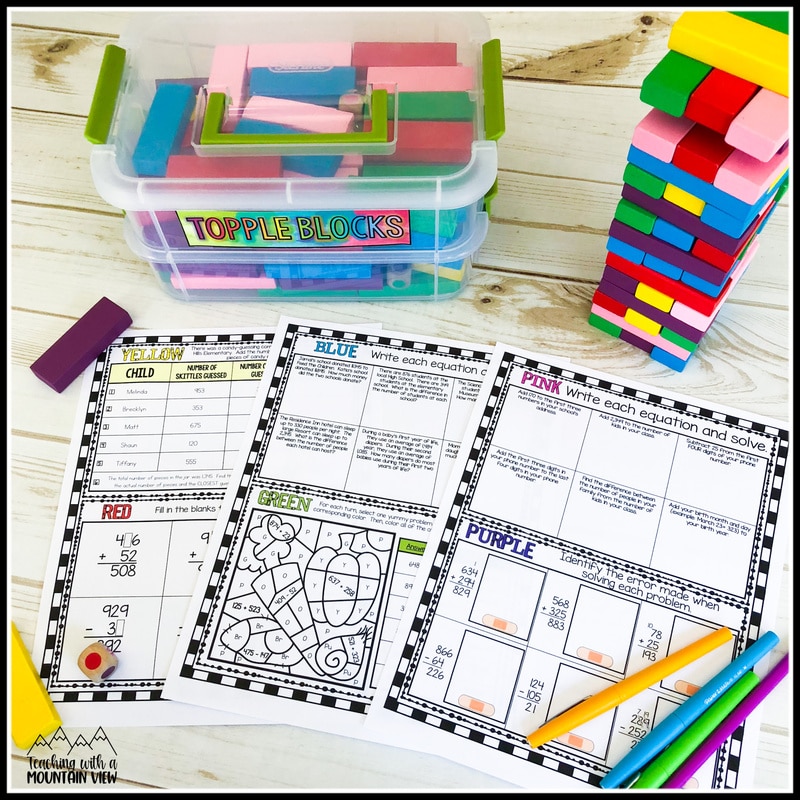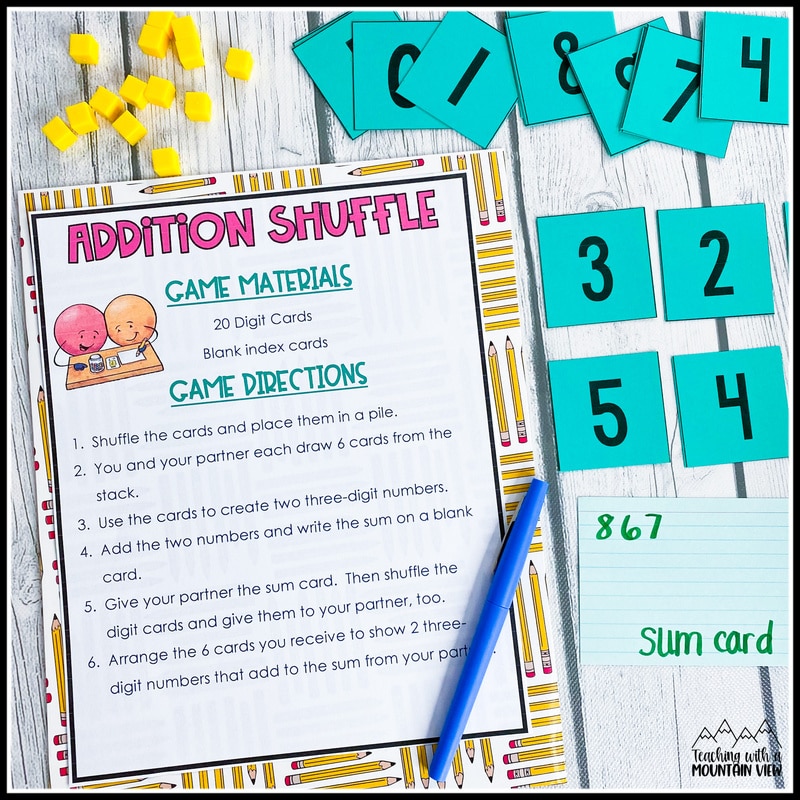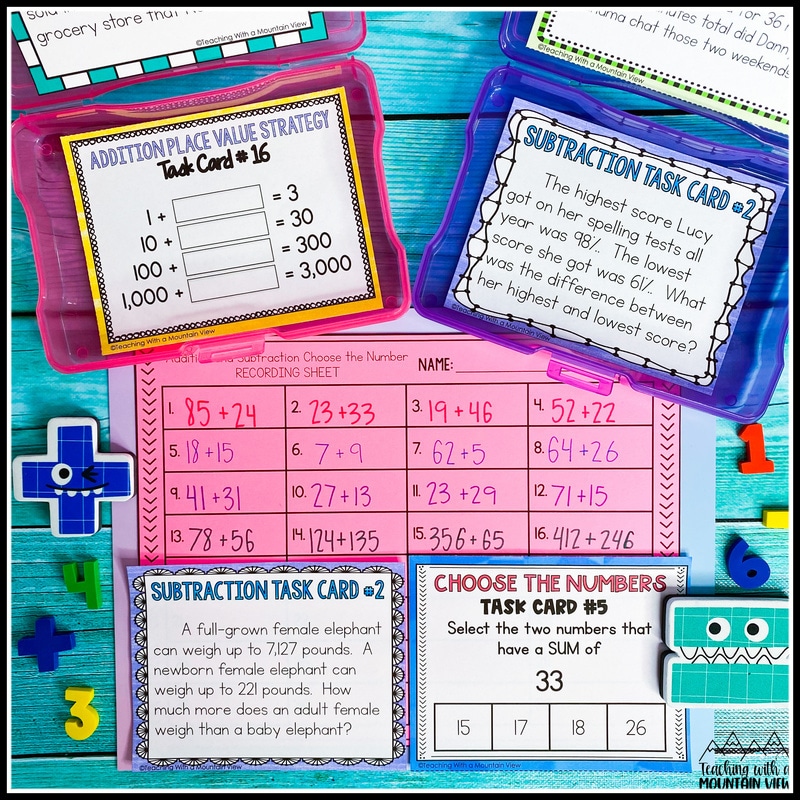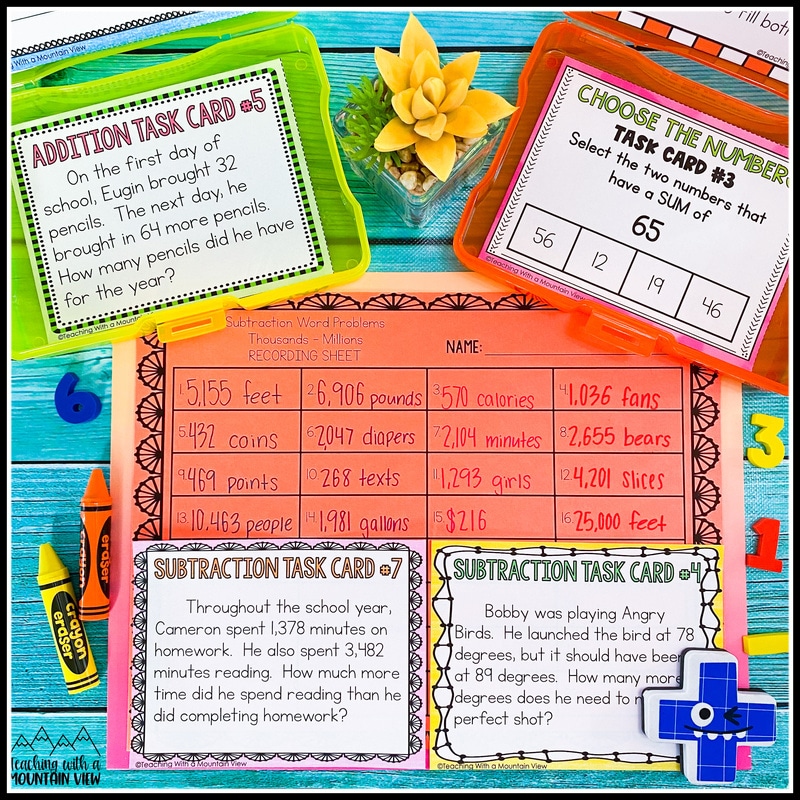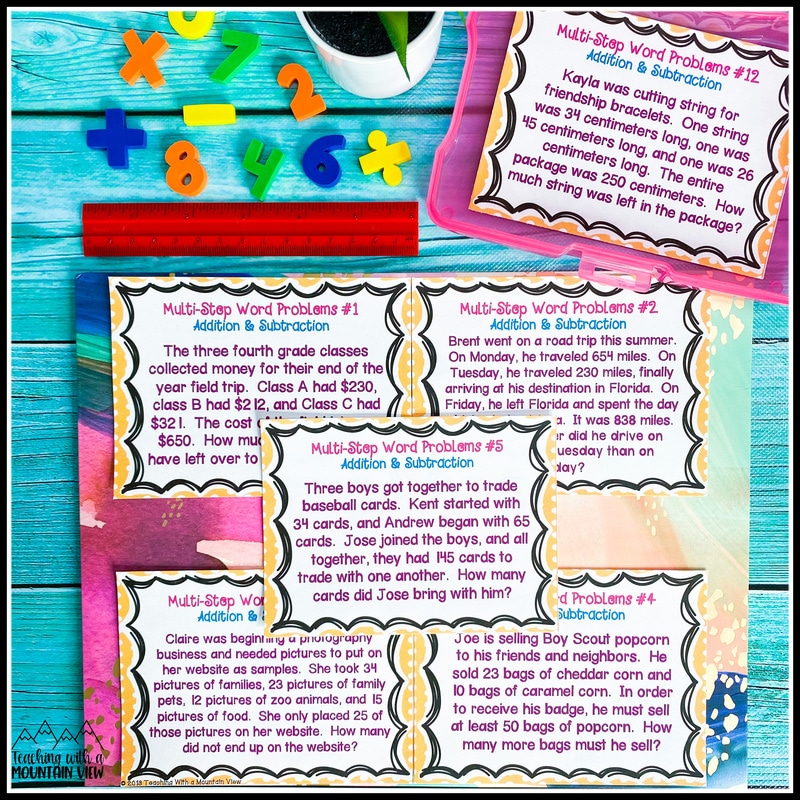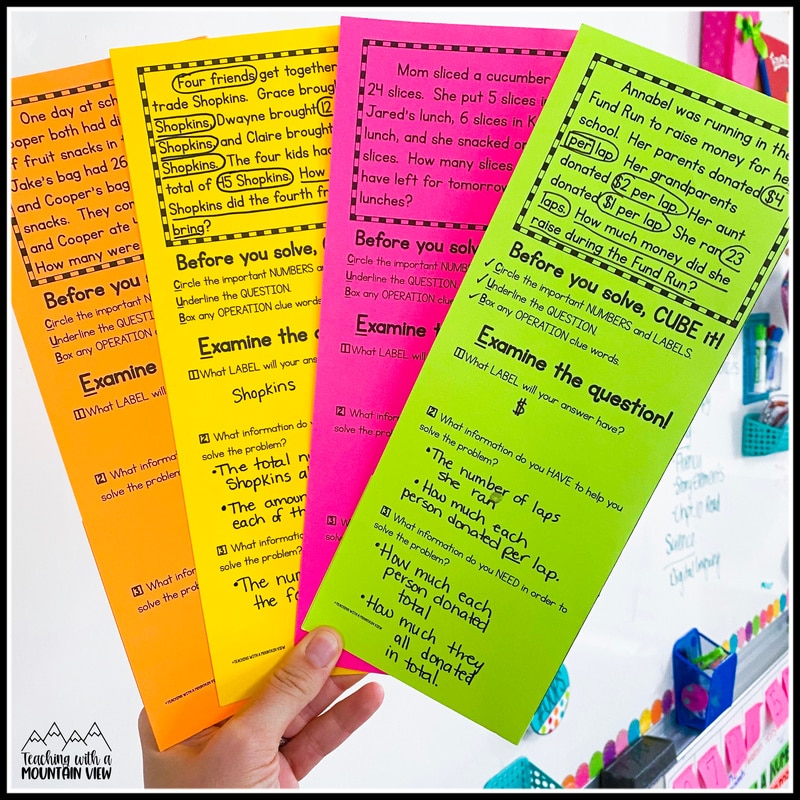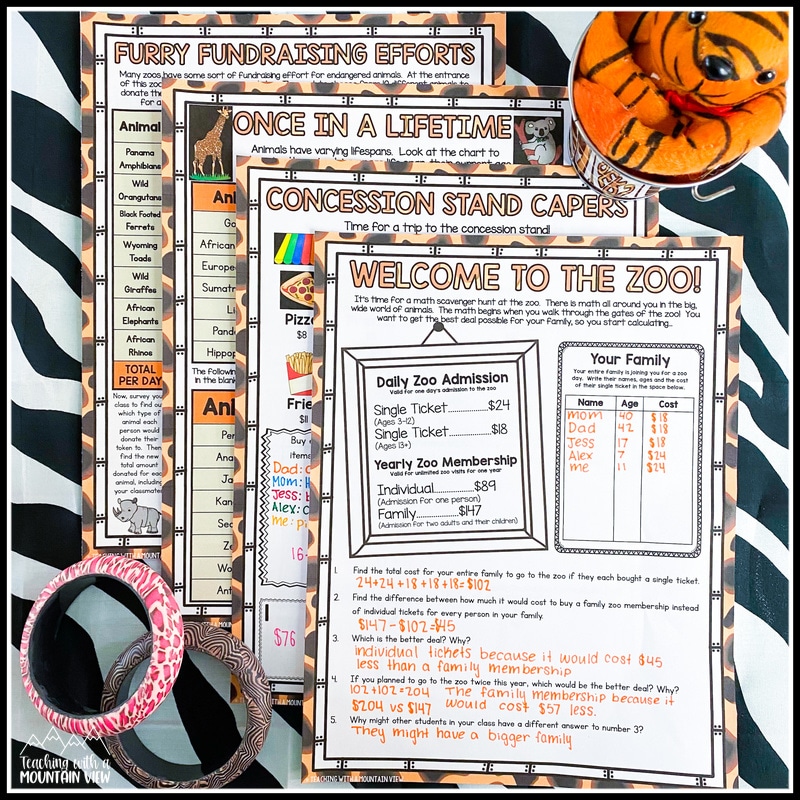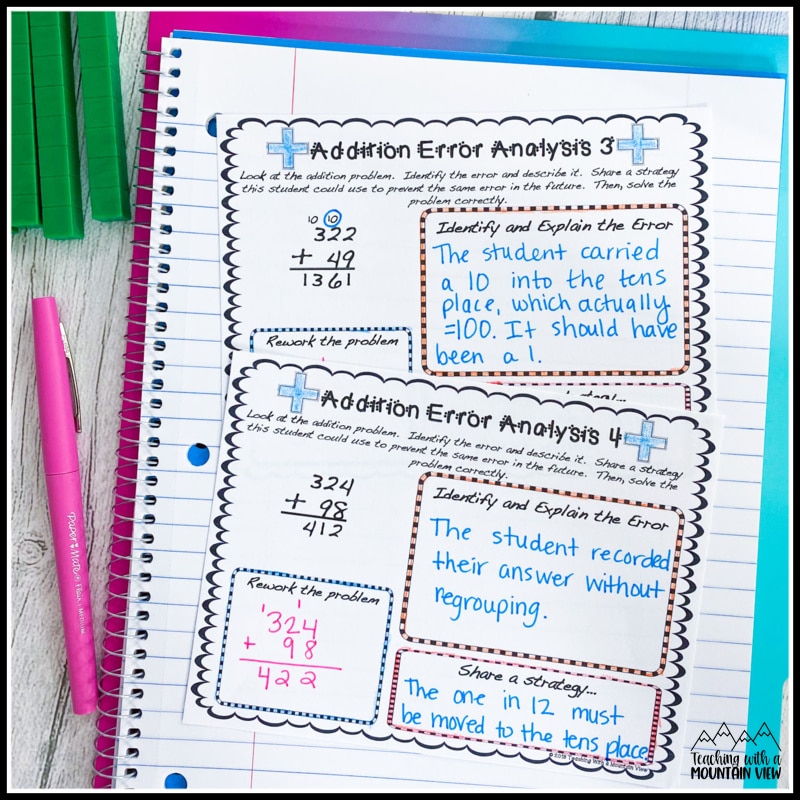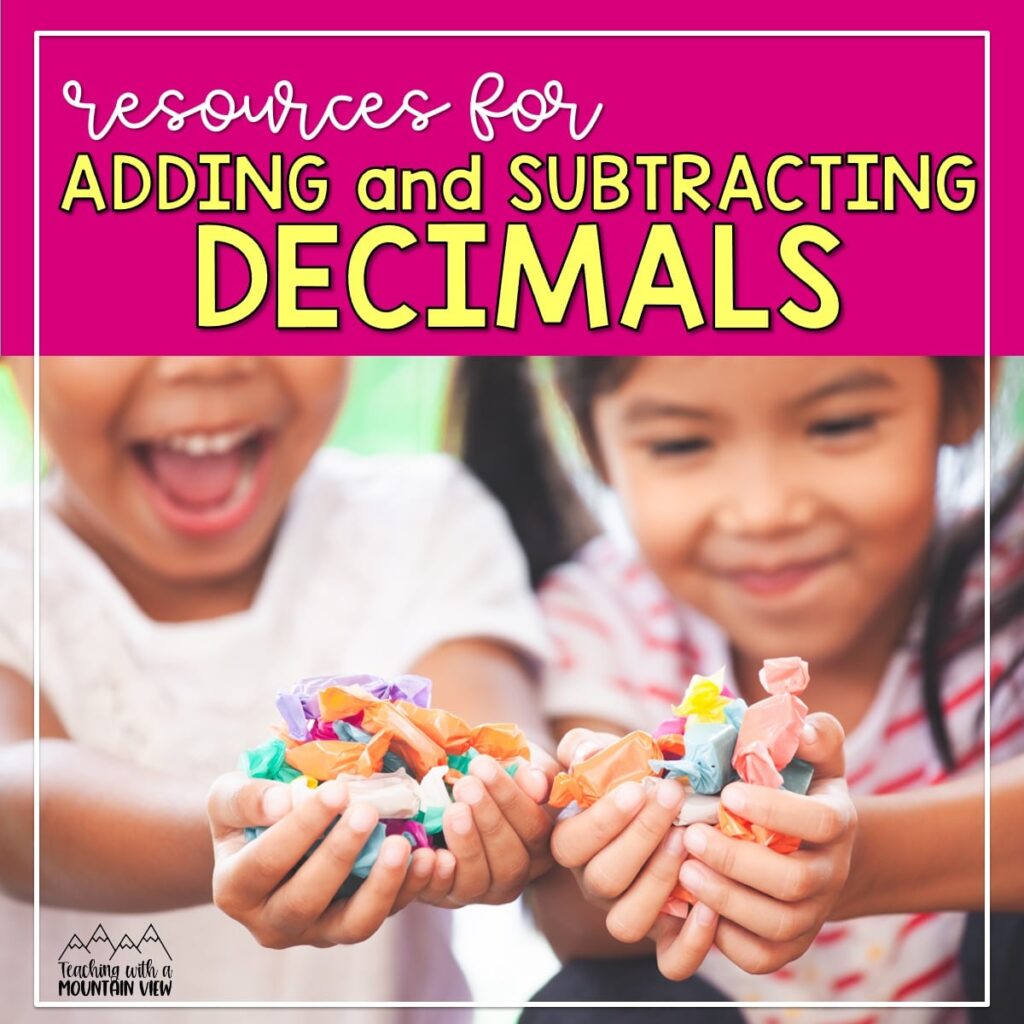Addition and Subtraction Strategies for Upper Elementary
By Mary Montero
Share This Post:
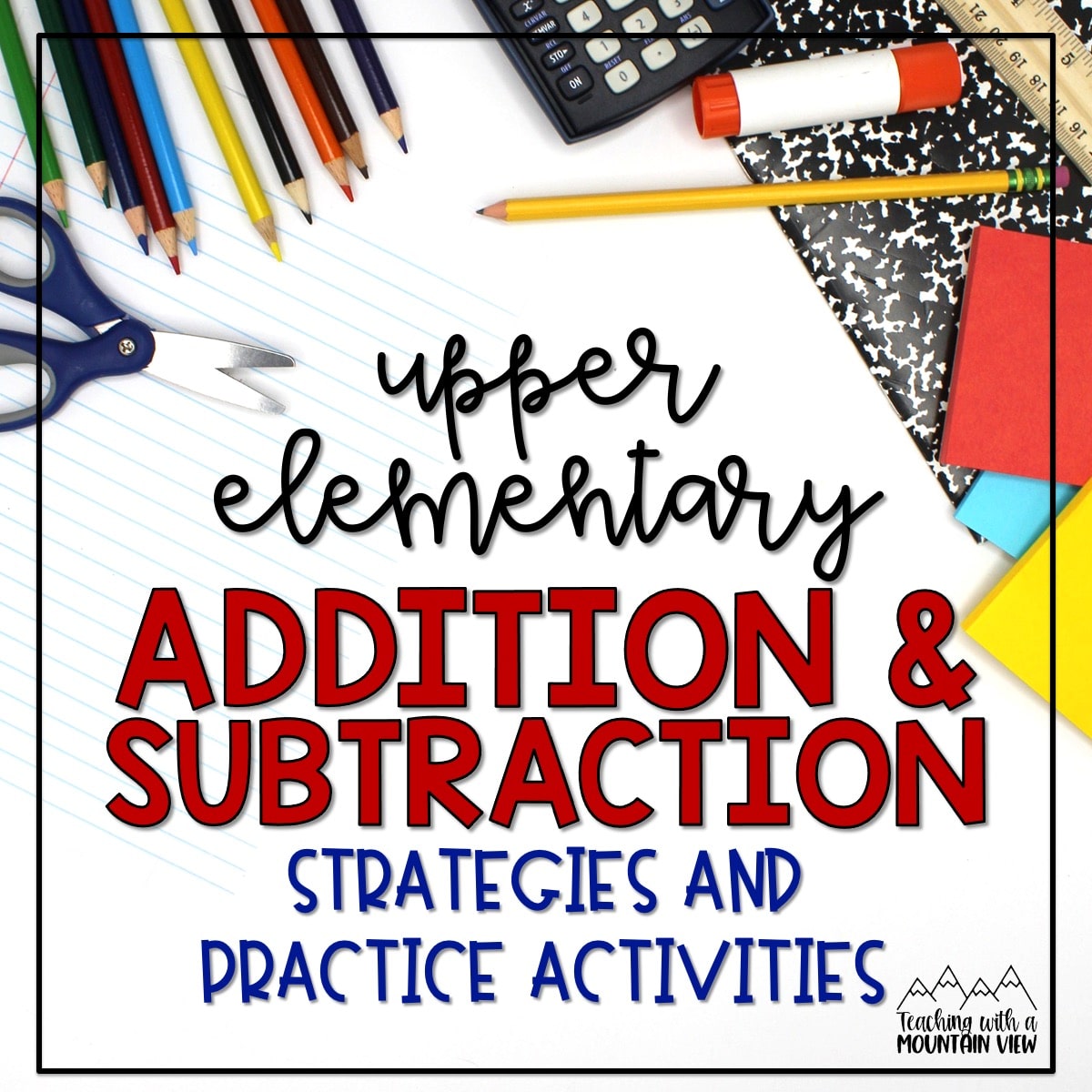
By the time students reach upper elementary, they often already have a lot of addition and subtraction experience. That doesn’t mean we can skip over this important skill, though! After a thorough review of place value skills, we always spend the beginning of our year brushing up on addition and subtraction strategies, making sure we have a solid conceptual understanding of addition and subtraction, and taking those skills deeper by focusing on word problems, working with larger numbers, and tackling lots of tricky zeroes. While this is not an entire unit on teaching addition and subtraction, I hope it provides you with some good strategies and activities to incorporate into your classroom!
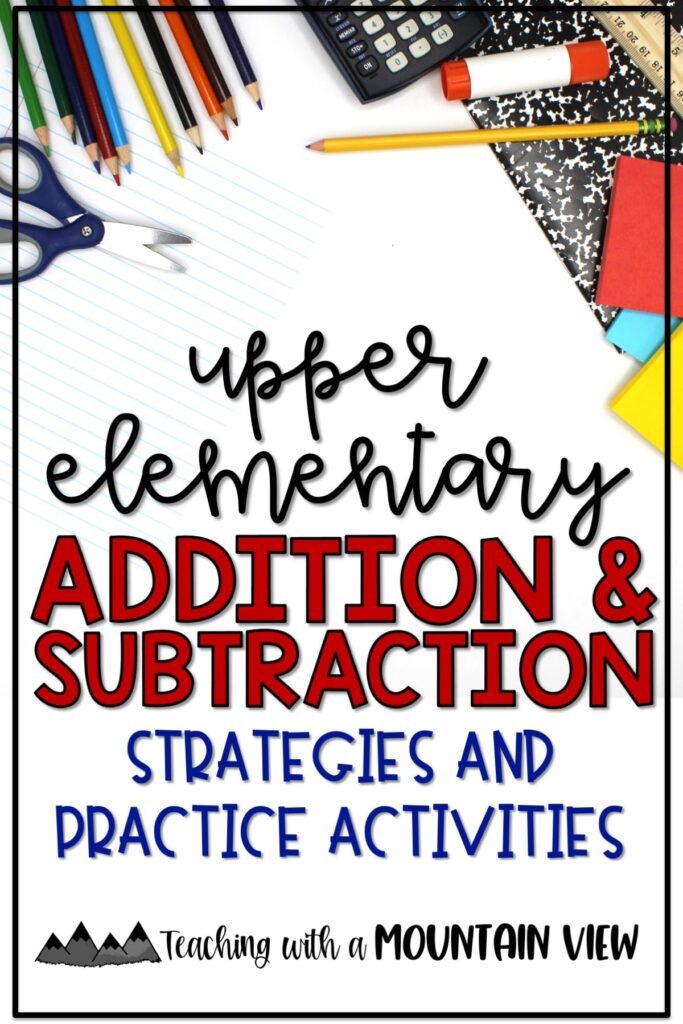
Introducing Addition with Regrouping
In 3rd grade, we spend a lot more time focusing on strategies for addition with regrouping.
Right at the end of our place value unit, I have students start (unknowingly) working with regrouping by having them model things like 15 hundreds = ? and 14 hundreds = ? and 15 ones = ?. We started with a few of these together, then some students moved on to doing it with base ten blocks while others were ready to just start stamping using our base ten block stamps (Amazon affiliate link). Here is a quick look at my board and some student work while they did this.
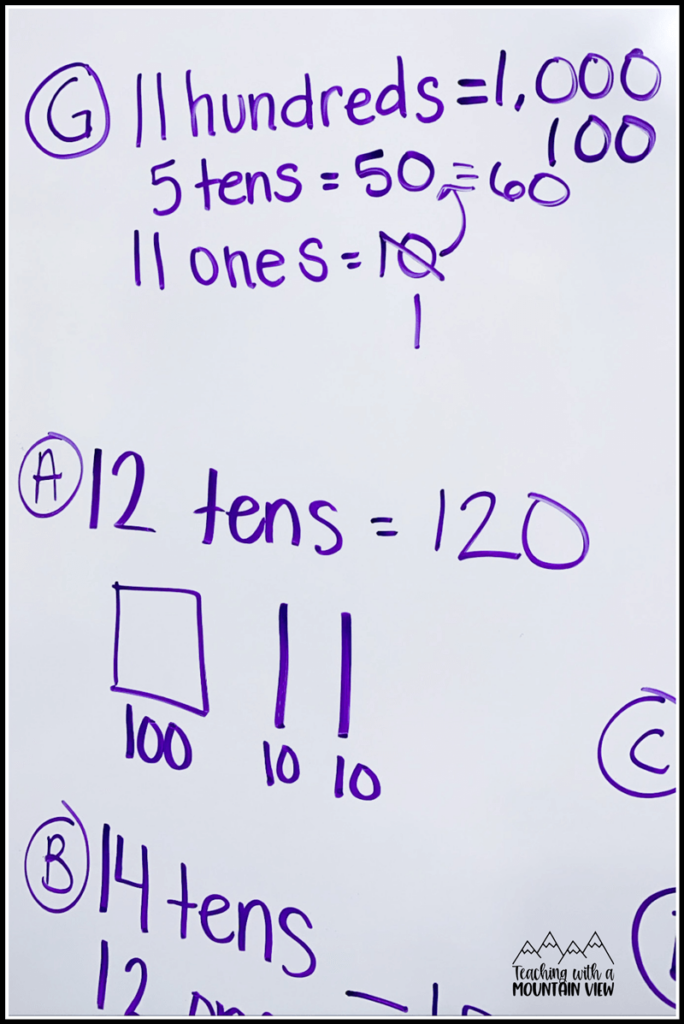
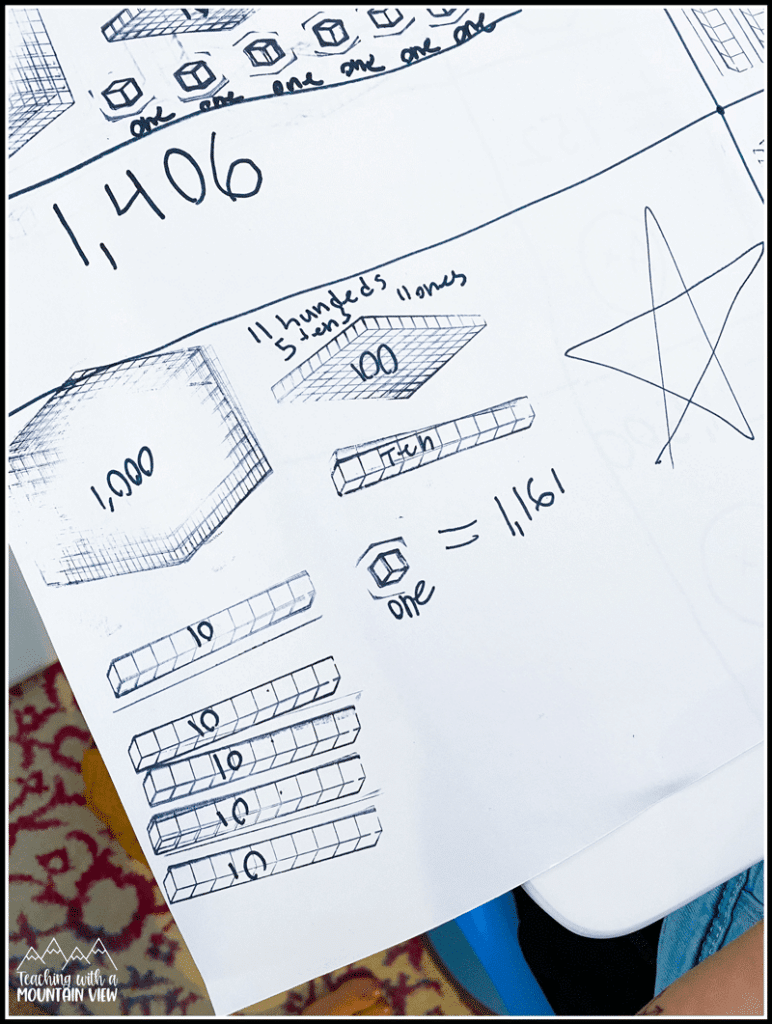
After they were able to do that (and had a VERY conceptual understanding of this type of regrouping), we moved on to actual addition. Here is an anchor chart we created together to visualize regrouping with base ten blocks, expanded form, and finally, the more traditional algorithm for regrouping. We spent several days completing this TOGETHER, and I’m a HUGE fan of color-coding, as you can tell!
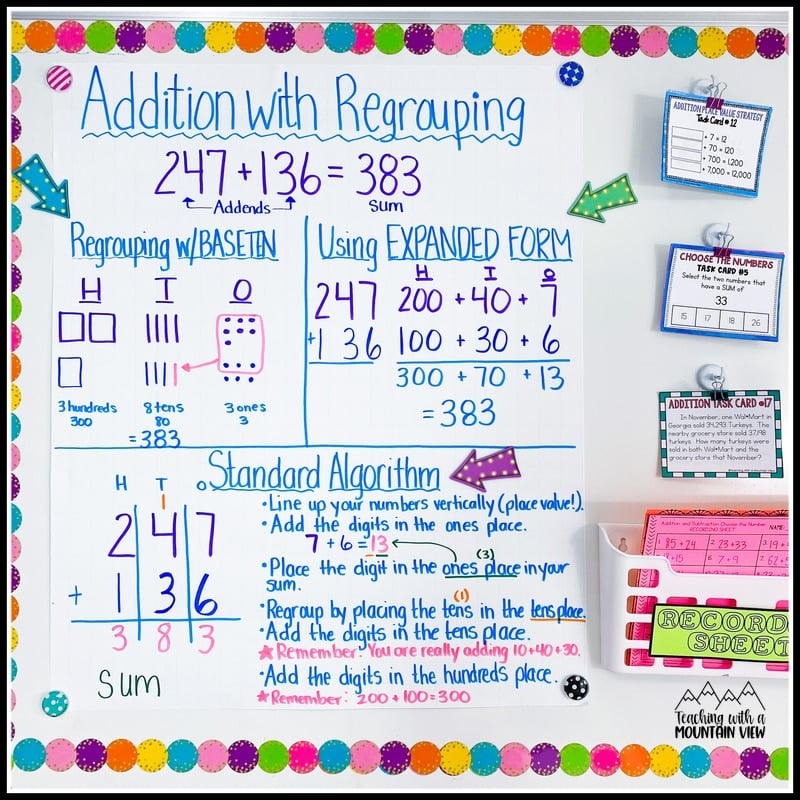
Practice Activities for Addition with Regrouping
Once students have a firm grasp of their addition and subtraction skills, it’s time for practice in our math rotations. If you aren’t sure how to set up math rotations, this post is packed with ideas for how to organize your math workshop.
Addition Aquarium: I have several of these “create a picture” activities, and my students just adore them! They solve multiple problems to figure out what their aquarium should look like. They are extra fun because most of the time, their pictures are all different since they are all working with different numbers. The Addition Aquarium is FREE, and it also hits a lot of place value skills, which is always a bonus this time of year!
Topple Blocks Game: Topple Blocks (Amazon affiliate link) are always one of our favorite rotations. The blocks include a multi-colored dice that the students roll, and it tells them which colored block they need to pull from the tower. Before they can pull their block, everyone on the team answers a question with the corresponding color. We use this addition and subtraction topple block set during this unit. I particularly love this set because they practice their skills in many different ways… from analyzing errors to word problems and more.
Addition Shuffle: Addition Shuffle is one of my FAVORITE games to have students play. Each partner gets six digit cards. Arrange them into two, three-digit numbers, add them on one side of an index card and put their answer on the other side of the card. Then, students give the answer and the shuffled digit cards to their partner, who manipulates the digit cards to figure out what the equation was. It’s a SUPER low prep, low floor, high ceiling task, and my students BEG to play it. You can download addition shuffle for free here.
Addition and Subtraction Task Cards
Task cards always play a big role in our units, and I have several scaffolded options to practice addition and subtraction. We can cover most of our addition and subtraction standards with this huge set of 200 differentiated addition and subtraction task cards. They’re digital and printable, which means we can mix up how they’re used in our rotations or whole class activities. I print them in booklets, have them play with games, display them as warmups or exit tickets, use recording sheets for quick checks, etc. They’re fun for playing SCOOT too, if you have time for a quick whole group game!
Don’t forget about the importance of multi-step word problems when you’re teaching addition and subtraction! Mastering multi-step problems is SUCH an important upper elementary skill, and I love to tackle it all throughout the year. These addition and subtraction multi-step word problem task cards challenge students to add, subtract, or both to find the answer. You can learn more about how we approach multi-step problems in this post, which includes a ton of freebies.
Math Projects
I’ve shared how I use math projects for real-world learning and differentiation in this post. I created The Great Zoo Review to provide a rigorous review of multi-digit addition and subtraction. This project truly requires students to think critically about which operation to use, why they are using it, and then of course, solve. It is PERFECT for addition and subtraction enrichment.
If you’re looking for an addition and subtraction project that is slightly less enrichment-based, I created a mini project based off The Great Zoo Review! It uses a visit to the aquarium to help students practice their addition and subtraction skills in a more straightforward way. I suggest this version for 3rd graders working on-level, and The Great Zoo Review for enrichment and 4th and 5th graders working on their addition and subtraction skills. The beautiful part is that the content is nearly identical, so you can have students working through both projects (or select pages from both projects), and they won’t realize that one is significantly different than the others!
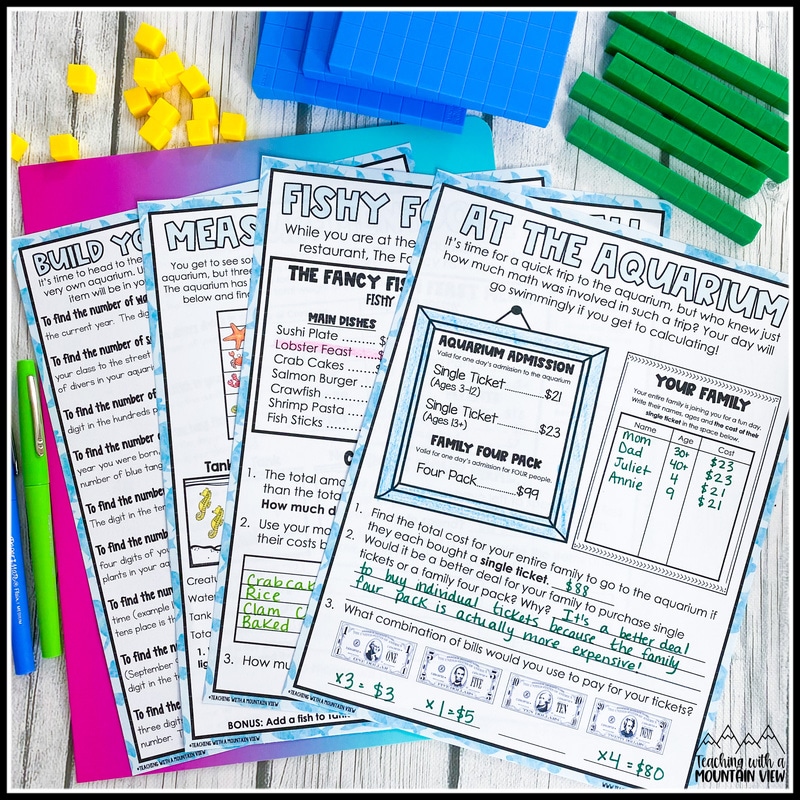
The best part? The Aquarium portion of the project is FREE here, AND it pairs perfectly with the addition aquarium picture activity that I mentioned above!
Extending Understanding with Error Analysis
I HIGHLY recommend incorporating error analysis into your addition and subtraction unit! I’ve blogged about using error analysis before in this post. When we use an error analysis approach, it increases student understanding in incredible ways. For addition and subtraction, we start by learning to see the difference between a conceptual error and a computational error.
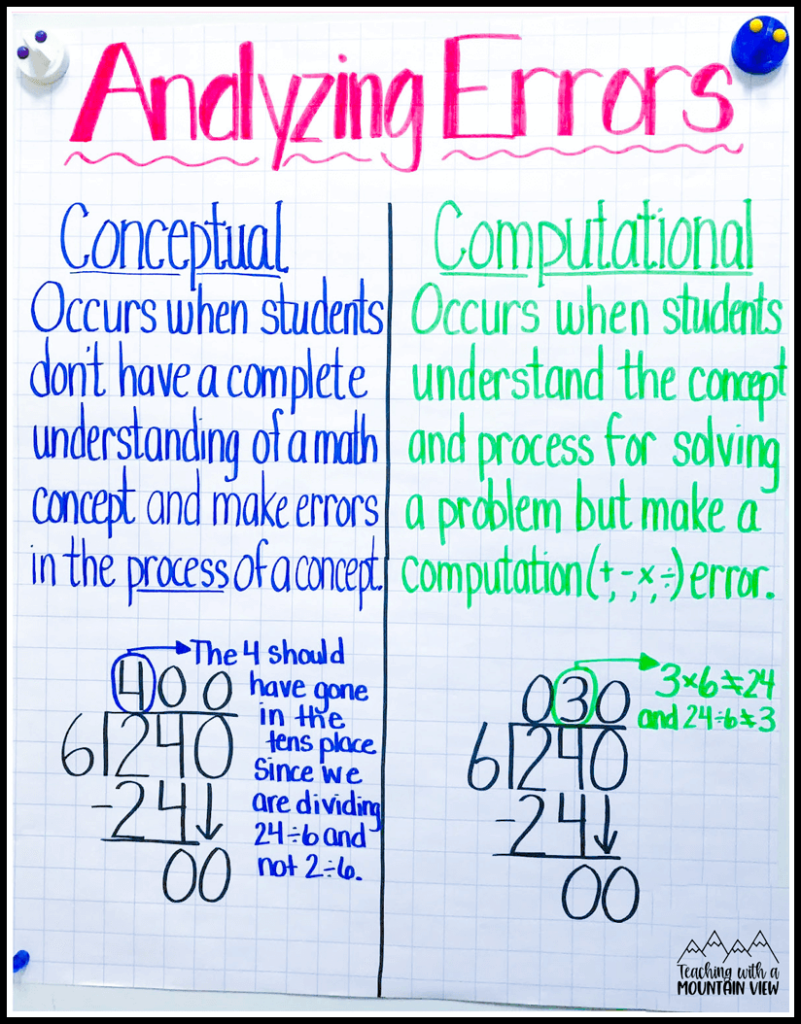
This FREE addition error analysis mini set is a good place to start to show students the process of walking through the problem and how best to complete an error analysis task.
Once your students understand the concept of error analysis, this subtraction with regrouping set is perfect for upper elementary students.
More Ideas
I hope this is a great starting point for you and your students when mastering addition and subtraction! If you’re ready to throw in decimals, I cover that extensively in this post about teaching decimals! It also includes a really fun Halloween decimal activity.
Mary Montero
I’m so glad you are here. I’m a current gifted and talented teacher in a small town in Colorado, and I’ve been in education since 2009. My passion (other than my family and cookies) is for making teachers’ lives easier and classrooms more engaging.







